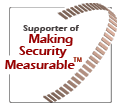Executive Summary
| Informations | |||
|---|---|---|---|
| Name | CVE-2022-1662 | First vendor Publication | 2022-07-14 |
| Vendor | Cve | Last vendor Modification | 2024-11-21 |
Security-Database Scoring CVSS v3
| Cvss vector : CVSS:3.1/AV:L/AC:L/PR:L/UI:N/S:U/C:H/I:N/A:N | |||
|---|---|---|---|
| Overall CVSS Score | 5.5 | ||
| Base Score | 5.5 | Environmental Score | 5.5 |
| impact SubScore | 3.6 | Temporal Score | 5.5 |
| Exploitabality Sub Score | 1.8 | ||
| Attack Vector | Local | Attack Complexity | Low |
| Privileges Required | Low | User Interaction | None |
| Scope | Unchanged | Confidentiality Impact | High |
| Integrity Impact | None | Availability Impact | None |
| Calculate full CVSS 3.0 Vectors scores | |||
Security-Database Scoring CVSS v2
| Cvss vector : | |||
|---|---|---|---|
| Cvss Base Score | N/A | Attack Range | N/A |
| Cvss Impact Score | N/A | Attack Complexity | N/A |
| Cvss Expoit Score | N/A | Authentication | N/A |
| Calculate full CVSS 2.0 Vectors scores | |||
Detail
| In convert2rhel, there's an ansible playbook named ansible/run-convert2rhel.yml which passes the Red Hat Subscription Manager user password via the CLI to convert2rhel. This could allow unauthorized local users to view the password via the process list while convert2rhel is running. However, this ansible playbook is only an example in the upstream repository and it is not shipped in officially supported versions of convert2rhel. |
Original Source
| Url : http://cve.mitre.org/cgi-bin/cvename.cgi?name=CVE-2022-1662 |
CWE : Common Weakness Enumeration
| % | Id | Name |
|---|---|---|
| 100 % | CWE-200 | Information Exposure |
CPE : Common Platform Enumeration
| Type | Description | Count |
|---|---|---|
| Application | 2 |
Sources (Detail)
| Source | Url |
|---|
Alert History
| Date | Informations |
|---|---|
| 2024-11-28 14:04:55 |
|
| 2022-07-20 17:27:17 |
|
| 2022-07-14 21:27:11 |
|







